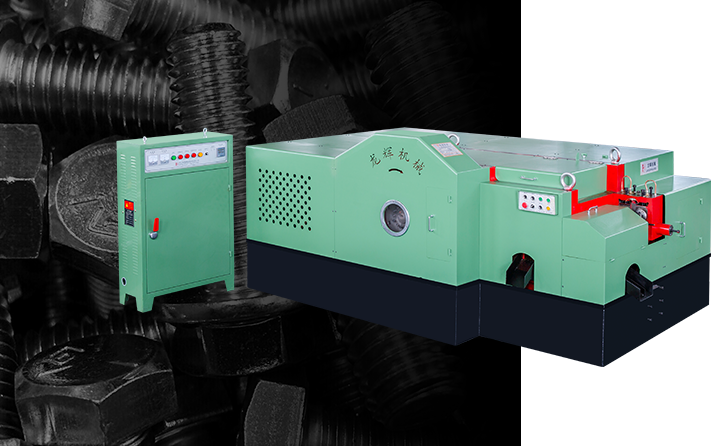Understanding Cold Head Machines
Cold head machines, also known as header machines, are specialized devices designed for the precise shaping and forming of fasteners and components. Unlike traditional hot forging methods, cold heading operates at or near room temperature, reducing the risk of material distortion and ensuring superior accuracy and consistency.
The Working Process
The operation of a cold head machine is a meticulously orchestrated process that involves several key steps:
Feed and Cutoff: The process begins with a continuous feed of wire or rod material into the machine. The machine's cutoff mechanism accurately portions the material, creating blanks for the cold heading process.
Cold Heading: In this pivotal step, the machine clamps the blank, firmly holding it in place, while the header tool shapes it into the desired form through the application of significant force. The material undergoes plastic deformation, allowing it to take on the shape of the die and assume the final component's form.
Trimming and Piercing: Depending on the specific requirements of the component, the machine may perform trimming or piercing operations to achieve the final design.
Ejection: Once the cold heading process is complete, the finished component is smoothly ejected from the machine, and the cycle starts anew.
Applications of Cold Head Machines
Cold head machines are incredibly versatile and find applications across a multitude of industries. Some notable applications include:
Automotive Industry: These machines are instrumental in the production of automotive fasteners, such as bolts, screws, and rivets, ensuring the components meet the stringent quality and safety standards of the automotive sector.
Construction: Manufacturers in the construction industry rely on cold head machines to produce high-strength fasteners and connectors for structural components.
Aerospace: In the aerospace sector, cold head machines are employed to create specialized fasteners and components used in aircraft, satellites, and spacecraft, where precision and reliability are paramount.
Consumer Goods: These machines are utilized for creating a variety of consumer products like furniture hardware, toys, and sports equipment.
Electronics: The electronics industry benefits from the precision of these machines to craft connectors, terminals, and fasteners used in electronic devices and circuitry.
Medical Devices: The medical sector leverages the precision of these machines to manufacture components used in medical instruments and equipment, where quality and sterility are critical.
Advantages of Cold Head Machines
Cold head machines offer a plethora of advantages that significantly enhance manufacturing efficiency:
Precision: These machines enable the production of components with precise dimensions and tolerances, ensuring high-quality products that meet stringent specifications.
Material Savings: The cold heading process minimizes material waste, contributing to cost savings and resource efficiency.
High Production Rates: Cold head machines can operate at high speeds, making them ideal for large-scale production.
Strength and Durability: Components produced by these machines are known for their superior strength and durability, making them suitable for critical applications that demand reliability and performance.
Consistency: The process ensures consistent and uniform results across all components, reducing the likelihood of variations in product quality.
Challenges and Considerations
While cold head machines offer numerous benefits, they also present specific challenges and considerations:
Tooling and Die Maintenance: Proper maintenance of the machine's dies is crucial to maintaining the quality and precision of the components. Regular inspection and refurbishment are necessary to avoid defects and ensure consistent results.
Material Selection: The choice of the appropriate material is essential to achieving the desired results, as certain materials are better suited for the cold heading process.
Secondary Operations: Depending on the component's design, secondary machining or additional operations may be required to meet specific requirements.


 English
English 中文简体
中文简体 Español
Español عربى
عربى

